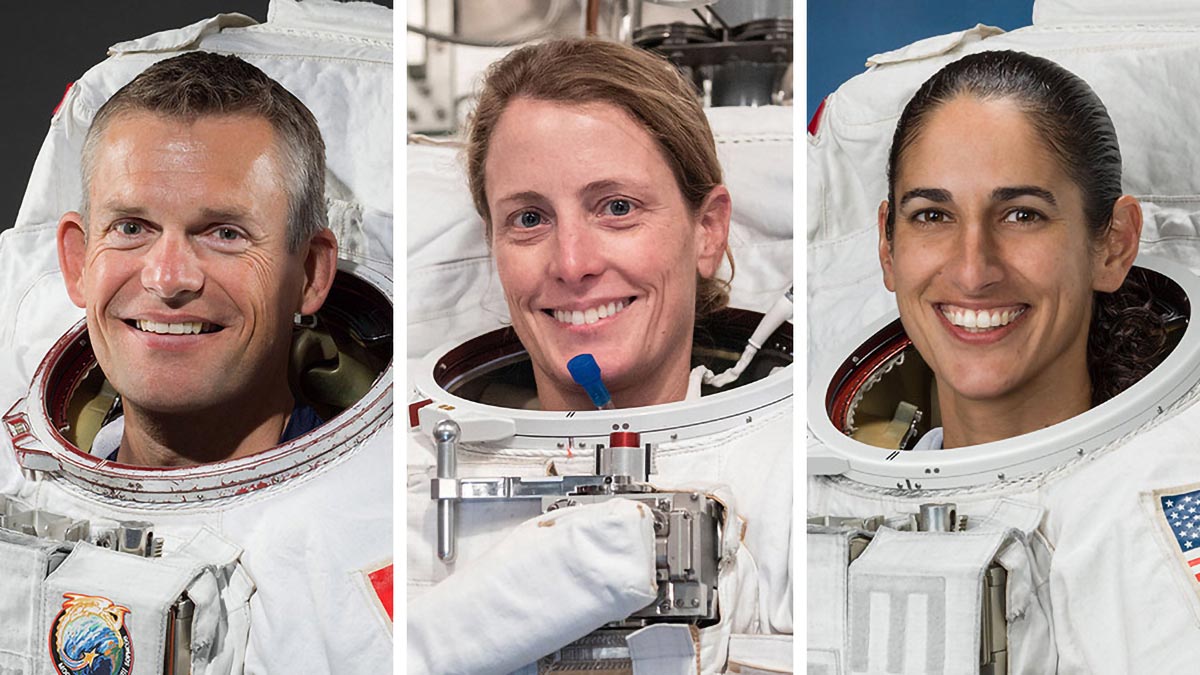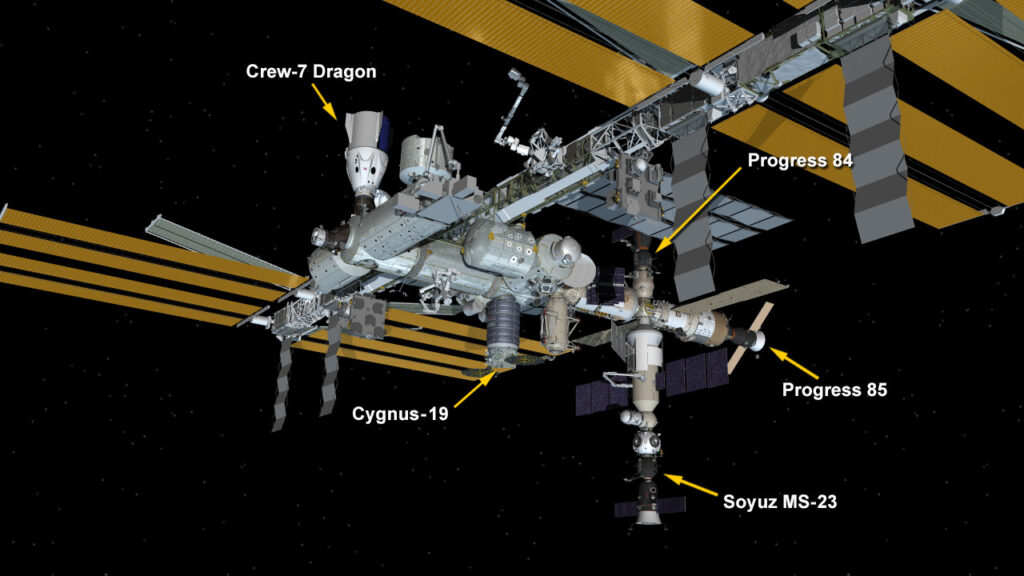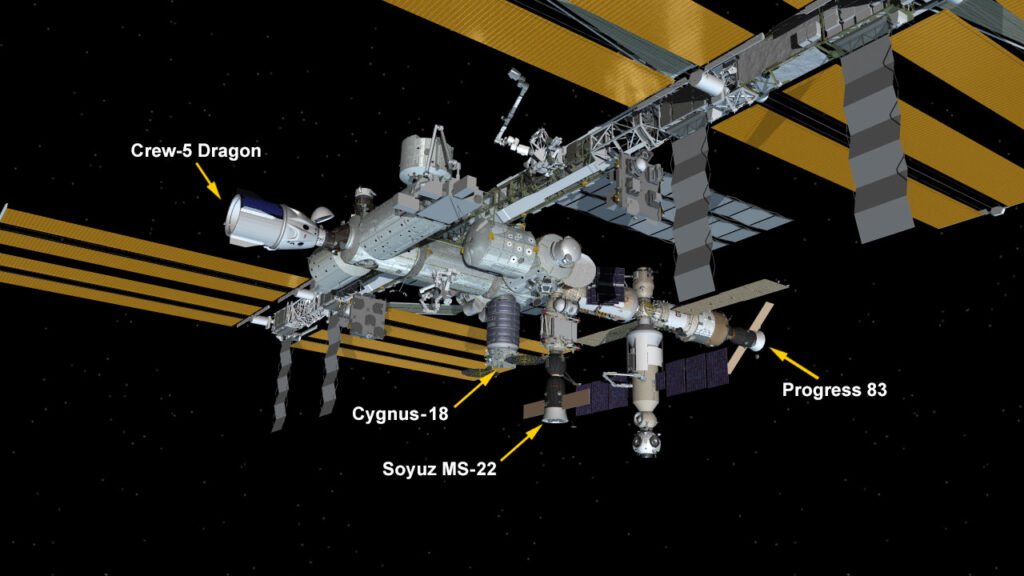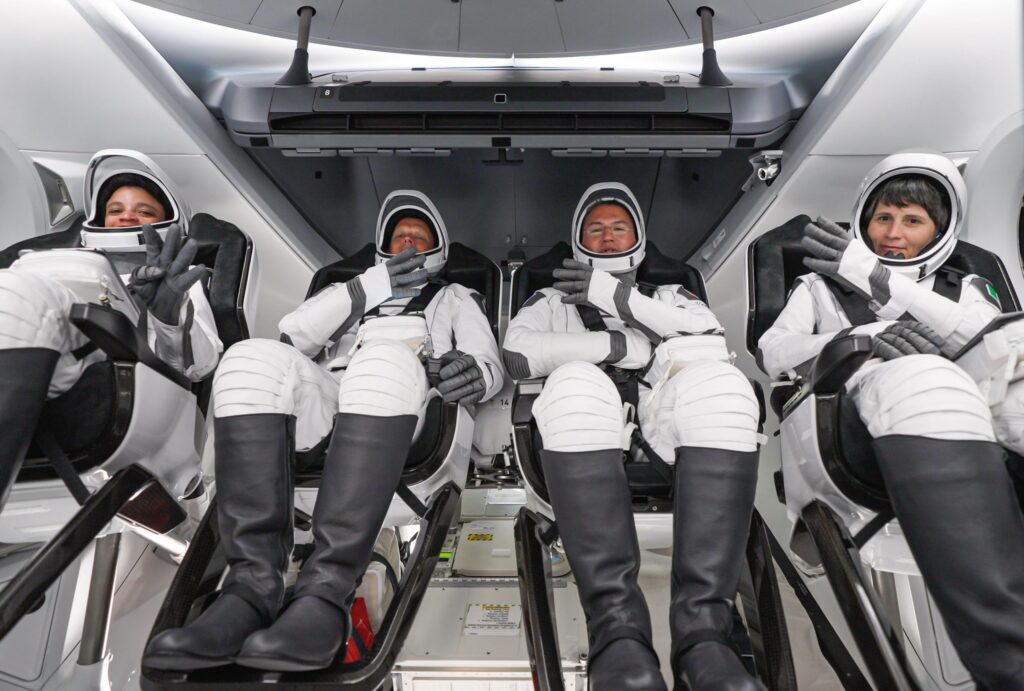
The Expedition 70 crew kicked off the first week of April with a host of human research to learn how to keep long-term space crews healthy. Three orbital residents are also nearing the end of their mission as they prepare to depart the International Space Station at the end of the week.
NASA Flight Engineers Tracy C. Dyson and Mike Barratt worked together Monday morning and explored how microgravity affects an astronaut’s sense of balance and motion. Dyson, with assistance from doctors on the ground, monitored Barratt as he wore specialized goggles that tracked his eye movements while performing a series of movements. The vestibular exam, part of the CIPHER suite of 14 human research studies, seeks to understand how a crew member’s sense of motion and perception adapts to weightlessness.
Barratt then moved on and joined NASA astronaut Jeanette Epps and tested a specialized thigh cuff for its ability to prevent space-caused fluid shifts. Epps attached electrodes to herself, wore the cuff on both her legs, and performed scans with the Ultrasound 2 device aided by Barratt and researchers on Earth. Insights may help counteract the upward flows of fluids creating head pressure and eye issues in astronauts.
Epps and NASA Flight Engineer Matthew Dominick later took turns conducting a vision test. The duo took a standard eye exam covering one eye and reading characters off a chart. Earlier, Dominick closed out the Cell Biology Experiment Facility following the completion of an experiment exploring creating artificial organs in space.
The orbiting outpost’s four cosmonauts participated in a variety of Roscosmos-sponsored space science and standard lab maintenance on Monday. Veteran Flight Engineer Oleg Kononenko practiced futuristic spacecraft and robotic piloting techniques that may inform future cosmonaut training. Cosmonaut Nikolai Chub collected his saliva and blood samples for a space immunity study. Cosmonauts Alexander Grebenkin and Oleg Novitskiy joined each other and studied how spaceflight affects the circulatory system in a crewmember’s limbs.
Another crew is getting for its return to Earth bringing home NASA astronaut Loral O’Hara after six-and-a-half months on the space station. She, Novitskiy, and Belarus spaceflight participant Marina Vasilevskaya will undock in the Soyuz MS-24 crew ship at 11:55 p.m. EDT on Friday, April 5. Novitskiy checked Soyuz spacecraft systems then joined the duo and practiced Soyuz descent procedures on Monday. The trio will parachute to a landing inside the Soyuz in Kazakhstan at 3:18 a.m. on Saturday, April 6. Novitskiy and Vasilevskaya arrived at the station on March 25 bringing Dyson with them aboard the Soyuz MS-25 spacecraft.
At the end of the day on Monday, all ten space station residents gathered and reviewed roles and responsibilities in the unlikely event of an emergency. The crew reviewed escape paths, safety gear, communication procedures, and more for scenarios including a depressurization event, a chemical leak, and a fire.
Learn more about station activities by following the space station blog, @space_station and @ISS_Research on X, as well as the ISS Facebook and ISS Instagram accounts.
Get weekly video highlights at: https://roundupreads.jsc.nasa.gov/videoupdate/
Get the latest from NASA delivered every week. Subscribe here: www.nasa.gov/subscribe




